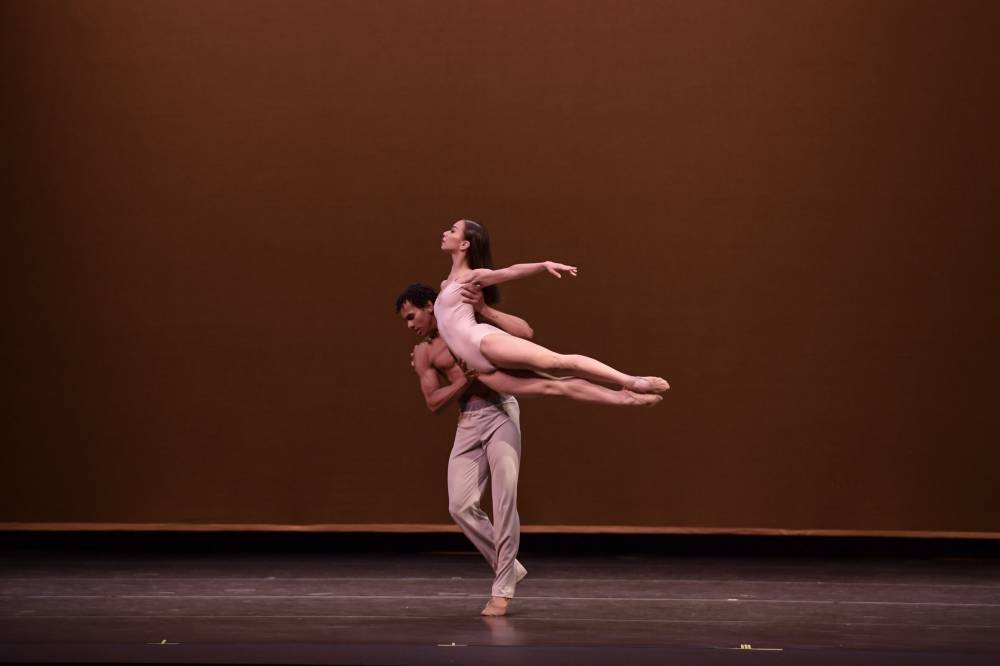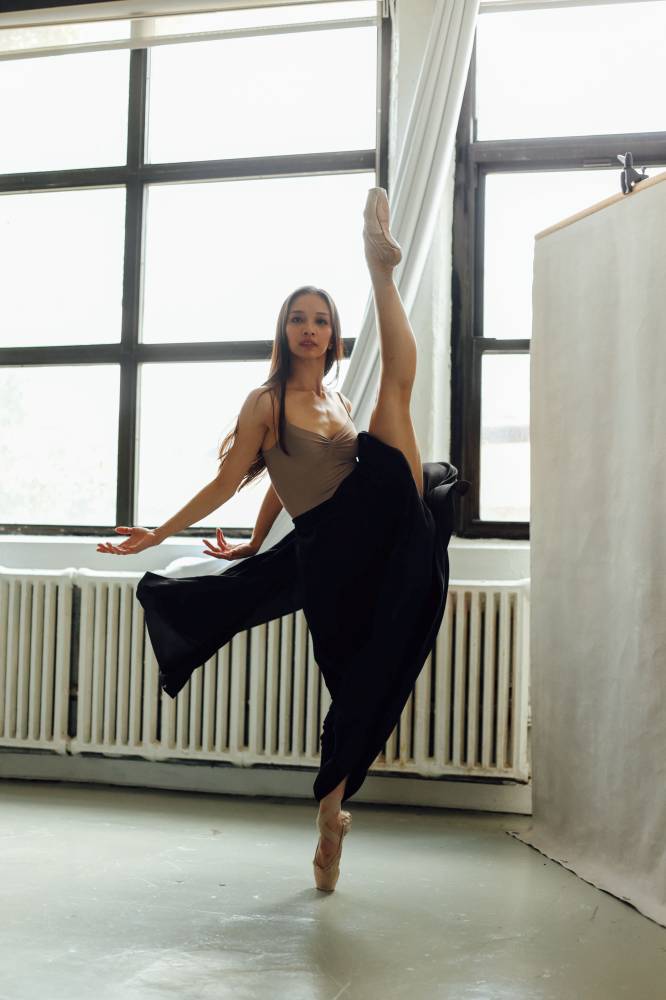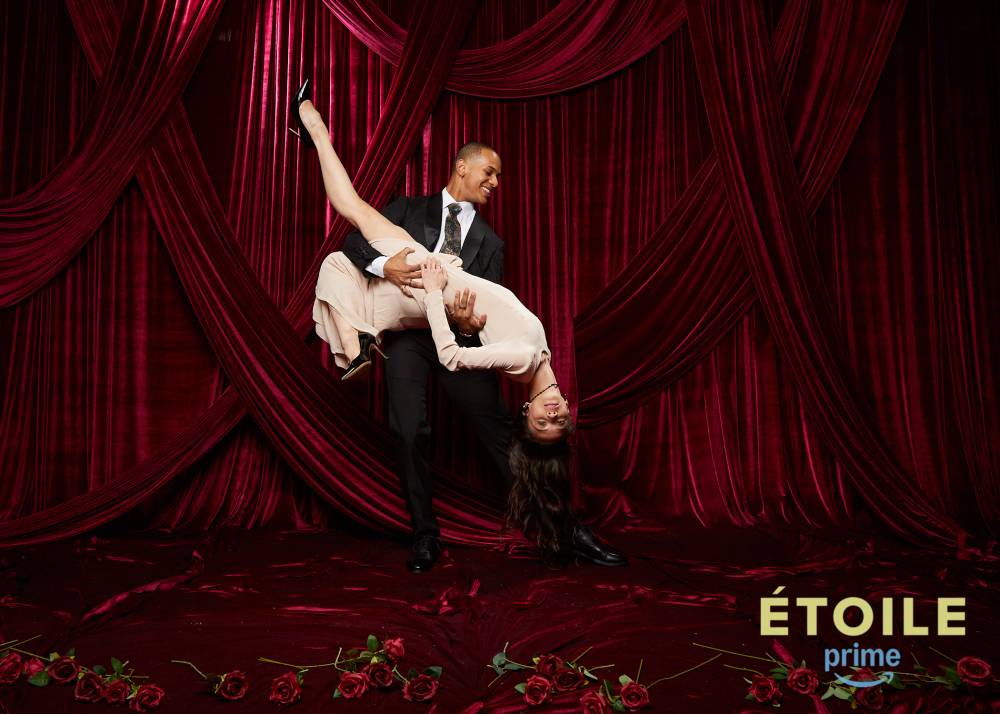Dancer finds a new stage in America

In 2021, dancer Denise Parungao took a literal leap of faith. Despite the virtual platform, she was at her peak as a principal dancer with Ballet Philippines (BP). With theaters still closed and the future uncertain, she accepted an invitation to perform “The Nutcracker” in Connecticut and left the Philippines that November. While passing through New Jersey, she sent her resume and videos of her BP performances to New Jersey Ballet (NJB). By spring 2022, Parungao began her NJB contract. Although the company lacks a formal hierarchy, she is frequently cast in solos and principal roles.
At 31, Parungao is entering another peak. Her Instagram posts reveal a braver, more mature artist. Her driving passion for dance manifests as an iron will. Watching Parungao, her inner world unfolds in a quiet dialogue between choreography and music, stilling the air and sharpening our focus. Her radiance mesmerizes as she dances with subtle sensuality, her movements fluid and yielding.
Parungao credits artistic director Maria Kowroski, a former principal with the New York City Ballet (NYCB), for setting the company’s high standards. NJB’s repertoire reflects NYCB influences, featuring works by George Balanchine, Jerome Robbins, Christopher Wheeldon, Justin Peck, and other NYCB alumni. Critics have lauded Kowroski for elevating NJB’s standards to rival America’s top companies. “She pushes everybody to dance better. She chose the repertoire that would suit the company,” Parungao said in a phone interview. “You want to be in a place where you are pushed to bloom and where you are appreciated.”

Her initial challenge was performing the “Fascinating Rhythm” section of Balanchine’s “Who Cares.” The solo featured a rapid series of steps and turns, notably two circular turning movements (manèges) and a detailed combination of sharp-pointed steps and spins. Control, balance, speed, and precision were essential to capture the jazz feel of Gershwin’s music. Parungao delivered.
Versatile
She credits her versatility to her time at BP under the direction of Paul Morales and National Artist Alice Reyes. “BP taught me to be adaptive, to accept every correction, how to work with different choreographers, how to listen,” she explained. Kowroski was impressed by how quickly Parungao incorporates corrections. Parungao observed that in America, some dancers tend to leave a company with new leadership. Her philosophy: “Be adaptive. If you’re versatile, you will be successful.”
Aside from adapting to a new style of dance, she also had to adjust to a challenging environment. To manage the high cost of living, she took on extra jobs during and between seasons. One such opportunity was being cast in “Étoile,” an eight-episode ballet series on Amazon Prime that premiered last April. The series plot involves two world-famous ballet companies in New York and Paris facing an uncertain post-pandemic future, leading them to exchange their principal dancers and artistic staff to save their institutions.
Looking for off-season work, Parungao saw an audition announcement for “Étoile.” Unlike in the Philippines, where leading dancers might have roles readily offered, she had to compete. “In America, you have to put yourself out there. If you want to join, do everything you can.” While other dancers needed an on-site callback audition, Parungao was cast based on her BP videos alone. Her character, Claire, is a member of the Metropolitan Ballet Theater, believed to be a fictionalized version of the American Ballet Theater.
“Étoile” was filmed at a studio in Brooklyn, Lincoln Center, and the New Jersey Performing Arts Center.

Grueling schedule
The cast included actors portraying dancers and celebrity dancers such as Tiler Peck, Robbie Fairchild, and Joy Womack. Parungao worked with the Emmy-winning husband-and-wife team Daniel and Amy Palladino, who created, wrote, and directed the series, prominent choreographer Marguerite Derricks and distinguished principals from other top US companies. The filming process was grueling, with long waits between takes, three-hour rehearsals for a single minute of footage, and over ten takes for the same choreography. The dancers not only needed stamina for the long hours but also had to quickly absorb directions from the director and choreographer. Despite the demanding work, the environment fostered camaraderie among the dancers, and Parungao wouldn’t hesitate to do it again.
During the NJB season, the workday typically runs from 10 a.m. to 4 p.m. Parungao also teaches at the NJB School three times a week and at another local school. When she gets home early, she edits videos for NJB’s social media, providing an additional income stream.
“I had a comfortable life in the Philippines,” Parungao reflected. “I’m not saying I’m not comfortable right now, but I’m constantly working.”
Parungao learned to push her limits through contemporary works by world-renowned choreographers. Yet, she still yearns to perform the classics and other narrative ballets, which would showcase her acting abilities. “Maybe I’ll be an actress in the future. But I don’t want to stop dancing soon,” she said.

















